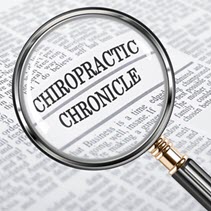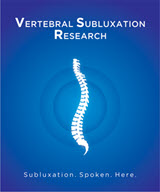New Research on Athletes & Heart Rate Variability

CLICK HERE to review the research
“Research is revealing that there is a relationship between abnormalities in the spine, the nervous system, stress, training, recovery and cardiovascular health” stated Dr. Matthew McCoy, a chiropractor, public health researcher and editor of the journal that published the study. “Basic science research shows that the proper development and function of the nervous system relies on proper structure and movement of the spine from an early age.”
Research has shown not only that normal structural alignment and joint movement is crucial, but that complex neurochemical communication and pathways involved in helping humans to develop normally are tied into spinal biomechanics and their related neurological pathways.
“We are now seeing more and more basic science and clinical research showing the relationship between spinal function and its relationship to performance and recovery” McCoy added. When it comes to athletes, adaptation, recovery, training and cardiovascular health, the nervous system is often overlooked and that is where HRV comes into play.
According to McCoy, “In a healthy organism, higher heart rate variability represents greater adaptability to stress from its internal and external environment. When the nervous system is free of obstructions, it can better regulate anatomic, physiologic, and biochemical alterations and adapt to stress and training as needed.”
The study reviews the literature on heart rate variability and its role in athletes exploring specific adaptations to imposed demand and how that principle is applied during periodized training, the role of the autonomic nervous system in the general adaptation response, contemporary views of stress and adaptation in exercise physiology and the role of heart rate variability as an objective outcome measure for chiropractic care in athletes.
Despite the relatively recent interest in the central and autonomic nervous system in sports performance circles, exercise science has been investigating the relationship for several decades. Heart rate variability (HRV) is the most accessible minimally invasive means available for evaluating an athlete’s response to training. HRV is a strong indicator of physiological changes in response to training programs, prescribing exercise intensity on an individualized basis, and has been utilized to assess overtraining which is often times predominated by sympathetic activity.
In regards to the role of chiropractic in HRV and athletes, significant structural shifts can occur in the spine. These structural shifts, more commonly known as vertebral subluxations by doctors of chiropractic, result in nerve obstructions and doctors of chiropractic correct these obstructions.
Vertebral subluxations may result in altered autonomic nervous system activity. Heart rate variability is a reliable and valid tool that may be used to assess the changes in autonomic activity associated with the reduction and correction of vertebral subluxations. Controlled studies suggest that chiropractic may improve heart rate variability and that favorable changes in heart rate variability may follow reduction or correction of vertebral subluxations.
The author of the paper calls for more research on the role of chiropractic care and HRV in athletes.
Contact Information:
Matthew McCoy DC, MPH
Annals of Vertebral Subluxation Research
http://www.vertebralsubluxationresearch.com
drmatthewmccoy@gmail.com 
Blogs
- The Chiropractic Cartel: A Look Back at Bias in Accreditation and its Imact on Today's Profession
- Inside Montana's Chiropractic Monopoly: ACA & MCA's Brazen Board Takeover
- Concerns Grow About Control of the NY State Chiropractic Board by the ACA - Use of X-ray in NY Under Threat
- Reproductive Health Information and Chiropractic Care: Navigating New Privacy Regulations
- Navigating Substance Use Disorder (SUD) Consent: What Chiropractors Need to Know













